The blogosphere and news sites have been bristling that former President of the United States, Barack Obama allowed water from the Great Lakes region to be pumped and sold to China. It’s a Lie. What’s worse is that none of these blog authors are checking the facts. Their lazy practice is to re-blog poorly written posts from inflammatory sites. Here is the Truth.
Lie #1 – Obama Allowed Great Lakes Water to Be Sold To China as Half the U.S. Faces Extreme Water Crisis
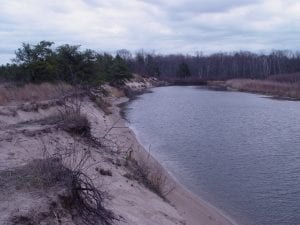
This overused inflammatory headline refers to the ability of companies to bottle water within the Great Lakes watershed. Quotes such as, “Why are we allowing foreign corporations such as Nestle to make millions upon millions of dollars pumping water out of the Great Lakes and selling it overseas?” This is not new news. Pepsi, Coca-Cola, Avita, and Nestle have been operating in Michigan and surrounding states for over 15 years. At least now, Nestle and other companies are operating under the Great Lakes-St. Lawrence River Basin Water Resources Compact was enacted by the 110th United States Congress effective December 8, 2008, before Obama took office. This Public Law 110-342 was introduced in the Senate by Carl Levin (D – Michigan) on July 23, 2008, passed the Senate on August 1, 2008, by unanimous consent, passed the House of Representatives on September 23, 2008, and finally signed into law by President George W. Bush on October 3, 2008.
However, some conspiracy sites and forums have erroneously reported that the Obama Administration sold Great Lakes water to China. One so-called expert noted, “Lake Michigan water is being shipped by boat loads over to China! By using a little-known loophole in the 2006 Great Lakes Compact, Obama minions are allowing Nestle Company to export precious fresh water out of Lake Michigan to the tune of an estimated $500,000 to $1.8 million per day profit.” This is false.
Half-Lie #2 – Companies are pumping millions of gallons of water out of the Great Lakes and selling it to China
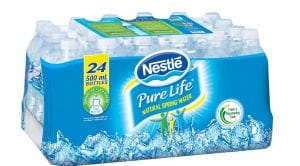
There is a bit of truth to this. Companies can collect and bottle water in the Great Lakes region but only in containers of 5.7 gallons or less. However, the water collection is not directly from the lakes but the aquifers in the region. Since 2000, Nestle Waters North America sell bottled “Spring Water” marketed with the Ice Mountain label. Its bottling centers are located in Mecosta County, Michigan, and Guelph, Ontario. Each plant supposedly bottles 700,000 gallons a day. However, a 2000 report by the International Joint Commission noted that the Great Lakes basin imports 14 times the amount of bottled water that is withdrawn and shipped elsewhere.
Lie #3 – Obama allowed container ships to come into the Great Lakes, fill up and export our water to the Chinese.
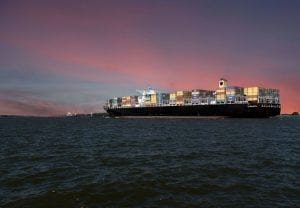
Long before Obama was a national politician, Canada was looking to sell Great Lakes water wholesale. In 1998 the Nova Group obtained a permit from Canada’s Ontario Ministry of the Environment to export approximately 160 million gallons per year of water from Lake Superior for export to Asia in bulk containers. Due to objections of Great Lakes governors and citizens, the permit was revoked.
The water from the Great Lakes is not being exported wholesale to Asia or the Chinese.
Lie #4 – Foreign companies are pumping water out of the Great Lakes without limits.
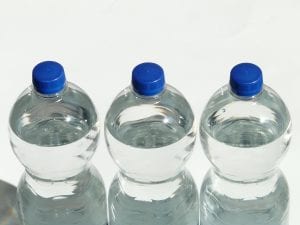
A company from Switzerland, Nestlé, has been operating a water bottling plant in Michigan since 2000. In 2009 the Michigan Citizens for Water Conservation sued Nestle Waters North America/Ice Mountain. An out-of-court settlement was reached in 2009. Nestle/Ice Mountain’s water pumping permit was reduced by almost half. Nestlé agreed to lower its spring pumping in Michigan earlier in the spring season during fish spawning and continue low pumping during the summer months to protect the already stressed stream and lake. Other companies that bottled water from the Great Lakes region include Coca-Cola, Pepsi, and Avita.
In 2018 Nestle, had been extracting and exporting up to 250 gallons a minute from a well in Evart, Michigan. Nestle filed for a new permit that would allow the company to pump 400 gallons of water each minute of the day, 365 days a year.
The Michigan DEQ is powerless to stop the foreign company from proceeding with its plan despite overwhelming opposition.
Half Lie #5 – The Great Lakes are Diverted Out West
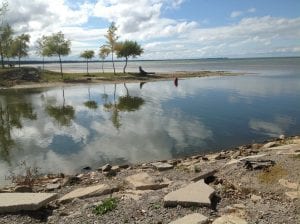
The largest, longest-standing and most controversial diversion from the Great Lakes is at Chicago, where the Chicago Sanitary and Ship Canal, finished in 1900, reverses the Chicago River and connects Lake Michigan to the Mississippi River. About 88% of all water diversion occurs in Illinois to the Mississippi.
The U.S. Supreme Court, in a 1967 consent decree, limited the Lake Michigan water diversion through the Chicago canal to 3,200 cubic feet of water per second.
More water is diverted into the Great Lakes than is diverted out, particularly at the Longlac and Ogoki diversions in Ontario. They take water bound for Hudson Bay and divert it to northern Lake Superior at 5,580 cubic feet per second. The diversions were initially created to bolster hydroelectric power generation to help wartime manufacturing in the U.S. during World War I. These were maintained by mutual agreement between the U.S. and Canada after the war.
Lie #6 – The Waukesha & Foxconn Flip Flop
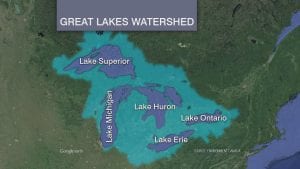
The newest threat comes from Wisconsin. The Milwaukee suburb of Waukesha, Wisconsin, with dangerous radium levels in their groundwater, has been approved to “borrow” up to 8.4 million gallons of Lake Michigan water every day (or 3 billion gallons every year). Waukesha is 17 miles west of Lake Michigan and resides on the cusp of being outside what is considered the Great Lakes Water basin. Normally water from that area would flow into the Mississippi. The deal also supports a new foreign manufacturer, Foxconn, who came to the area due to the plan to divert Lake Michigan water to support an LCD manufacturing operation.
The city of Waukesha in June 2016 was approved to divert water from Lake Michigan for its drinking water supply after eight representatives from the states that border the Great Lakes voted unanimously to allow the diversion. A single no vote would have scuttled the city’s plan. Per the compact rules, Waukesha would have to return the same amount of water it takes from Lake Michigan back into the lake. The water would be treated at a Waukesha water plant and dumped into the Root River, where it would flow into Lake Michigan through Racine, Wisconsin.
Great Lakes Diversion
Waukesha is the first city to apply for a diversion of Lake Michigan since a ban on such practices was enacted in 2008. Canada reviewed and approved the agreement. It did not intercede as allowed with the Great Lakes-St. Lawrence River Basin Water Resources Compact. In 2018 Foxconn pulled back from a commitment to a manufacturing facility that required the water diversion; however, it could have brought up to 13,000 jobs to Wisconsin.
Environmental groups are seeking to file suit and block the Waukesha diversion. They note that the Great Lakes Compact requires that a diversion be primarily for residential customers, and in the case of the Racine diversion, the primary customer will be Foxconn.
How Many Gallons of Water is In the Great Lakes? – FAQ
How many gallons of water are in the Great Lakes?
How many people get their water from the Great Lakes?
How much fish is taken from the Great Lakes?
How many gallons of water are in Lake Michigan?
Related Great Lakes Stories
- Have We Turned the Great Lakes Into a Plastic Soup? – The New York Times reports that microplastics are now identified as a serious threat to the Great Lakes ecosystem.
- Support the Coast Guard on the Great Lakes – The Great Lakes covers a water area of more than 94,250 square miles and has a coastline shared with Canada of 10,900 miles. Michigan’s Great Lakes coast totals 3,288 mi, more coastline than any state but Alaska. The task of looking after such a large area is daunting. The amount of commerce carried by Great Lakes shipping exceeds $40B annually. The fishing economy stands at $10B. The US Coast Guard plays a vital role for each of the Great Lakes States and the national economy.
- Foreign Companies Are Stealing Great Lakes Water – In 2018, there was a public comment period in which over 80,000 Michigan residents submitted objections to a permit that allows Nestle to pump over half a million gallons of water a day from Michigan aquafers. A public resource. Then bottle it in single-use plastic and sell it back to us. It’s an ongoing example of utter foolishness with unfettered exploitation of limited natural resources for a foreign company’s profit.
- Great Lakes Beaches Across Michigan are Amazing – If you have lived and traveled in the Great Lakes region, I think you will agree that there are some pretty amazing sites to explore. This may be why so many folks in the upper lakes don’t venture far during family vacations. There is too much awesomeness that one must not miss. Here is a small set of some obscure and best beaches in the Great Lakes region that you won’t want to miss on your travels.
- 2021 Great Lakes Water Levels – Updated each month from excerpts from the Army Corps of Engineers – Detroit District’s Monthly and Weekly reports for Great Lakes Water Levels and Great Lakes Water Level History.




